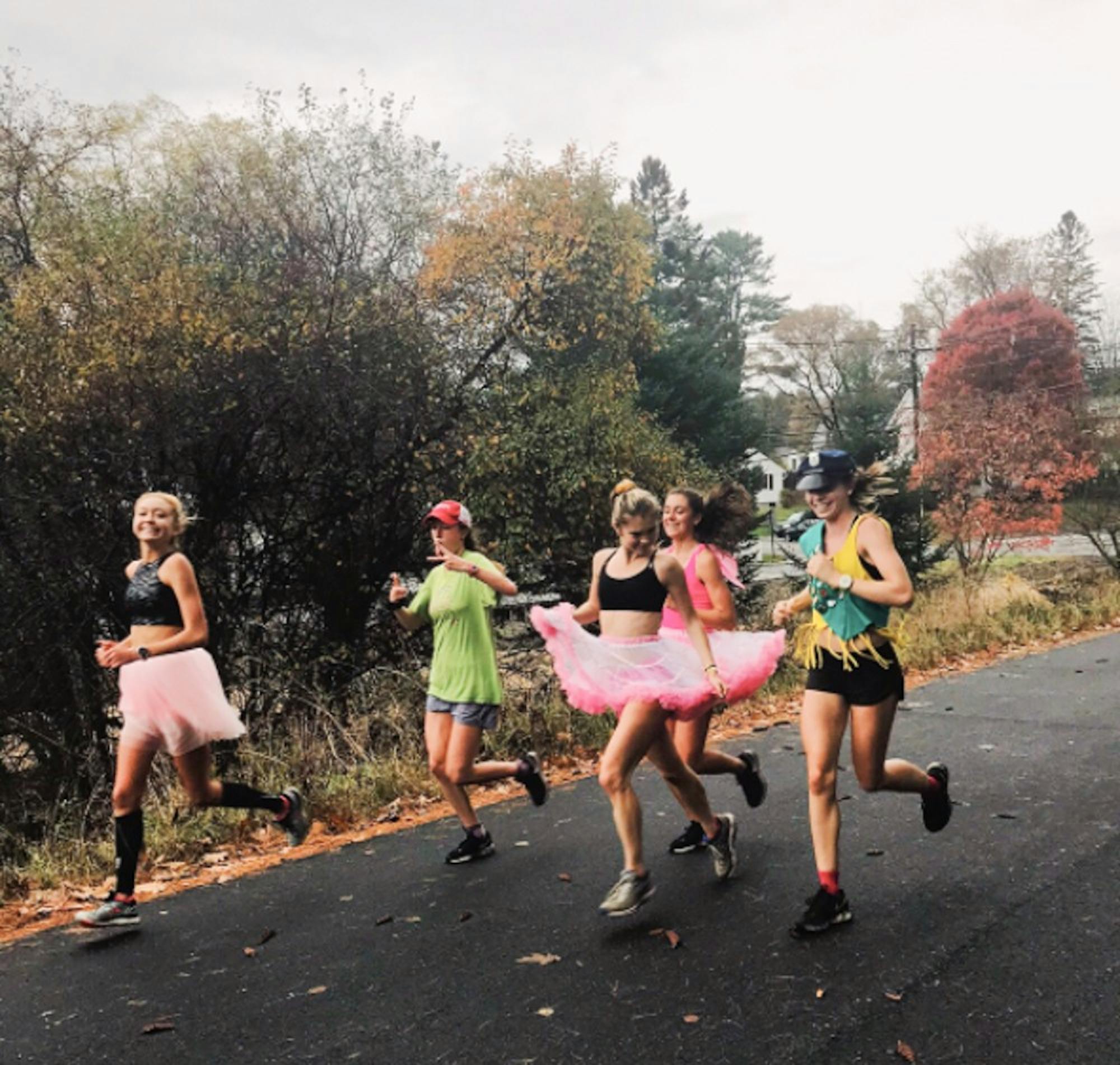For the men’s and women’s cross-country teams, Friday morning was arguably the most important morning of the season. The cross country-teams were at Van Cortlandt Park in New York City for the Ivy League Heptagonal Championships, the one meet of the season that pits the Ivy League schools in a race for the conference title.
The Big Green had great results. The women, having entered the race ranked No. 30 in the country, continued their strong season with a second-place finish, scoring 73 points — only seven points behind No. 24 Columbia University. The men’s team had what men’s head coach Barry Harwick ’77 referred to as “the best race of the season,” finishing fifth overall with 138 points.
Heps is more than just a championship race at the end of the season; it binds the teams together more tightly than any other competition during the season. The team celebrated Heps-o-ween, an annual tradition that occurs before both teams leave to compete at the Heps. On Wednesday, cross-country runners, decked out in unicorn onesies and other flair ran around campus, including through the halls of Baker-Berry Library. Along the way, the bunch made stops to invite individuals to join them at their upcoming race. Among those lucky to be stopped was College President Phil Hanlon, who agreed to take a picture with the whole squad outside Parkhurst Hall.
“[The upperclassmen] had all this flair for us,” Ella Ketchum ’21 said. “We all dressed up, and we ran with the boys’ team and we all ran around chanting. I really enjoyed it.”
The costumed run not only helps the team get closer but helps alleviate some of the stress that could come with the high pressure and anticipation of such an important race.
“We try to keep things in perspective as much as possible,” co-captain Pat Gregory ’18 said. “The guys on the team already put enough pressure on themselves.”
The goofy Dartmouth tradition seems to have worked in their favor. Will Shafer ’18 led the men with a 19th-place finish, completing the 5-mile course in 25:34.8, achieving his personal goal of placing in the top-20. The Big Green put their remaining four scoring runners, Gregory (28th in 25:48.0), Patrick O’Brien ’21 (30th in 25:51.9), Ben Szuhaj ’19 (32nd in 25:55.3) and Sean Laverty ’20 (36th in 26:00.1), all within 26 seconds of Shafer.
“A bunch of us found each other early on so we ran a good section of the race as a pack,” O’Brien said. “I think that helped a lot.”
Despite losing runners who competed in last year’s Heps to graduation, the men were not surprised by the performance given their training.
“A lot of the guys had their best races of the season yesterday and team-wise,” Shafer said. “It was our best performance, but at the same time there’s a feeling that we could still do quite a bit better.”
Overall, Harwick was pleased with the performance.
“We paced ourselves a lot better this time,” Harwick said. “When I talked to the team, we’re happy that we had our best race of the season, but we’re not quite satisfied [with] where we’re at yet, so we’ve got one more shot to go and I think we’ll do even better there.”
The women’s team entered the race hoping to build on its consistently strong performance this season. Co-captain Olivia Lantz ’19 continued her success from previous meets and earned First Team All-Ivy honors with a fifth-place finish, completing the 6-kilometer course in 21:17.0. Julia Stevenson ’20 and Ketchum were not far behind, finishing 11th (21:28.6) and 13th (21:32.5), respectively. Leigh Moffett ’18 (19th, 21:45.8) and Bridget O’Neill ’18 (25th, 21:56.7) rounded out the scoring runners for the Big Green.
The Heps is also special, Lantz explained, because it’s not just a smaller and less-crowded race, it’s personal and familiar. Teams can easily find their teammates around them and work together to move up in the race in the smaller Heps race than in a more crowded race like the NCAA Regionals. Much of their team and individual strategy revolves around finding and sticking with each other, running as a pack as they do so often in practice.
“Running with my teammates during the race was a really good motivator,” Lantz said. “Seeing those Dartmouth uniforms helped push me to work my way up.”
For younger athletes, finding teammates helps them to navigate a high-stakes collegiate race.
“It was really helpful to me, having the people that I work out with every day, seeing them run alongside me, knowing that if they can do it, then I can do it too,” Ketchum said. “I definitely had faith in our team.”




